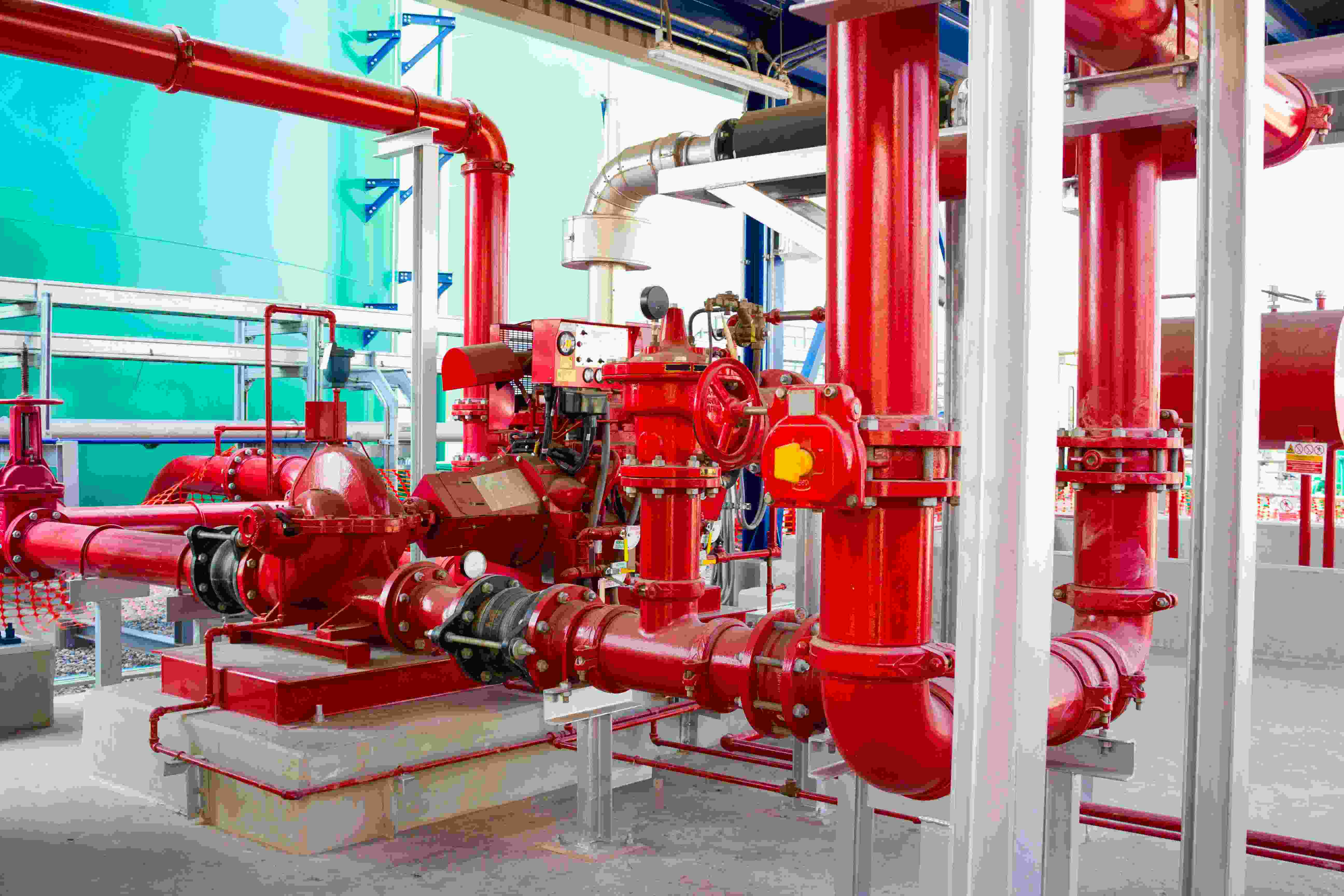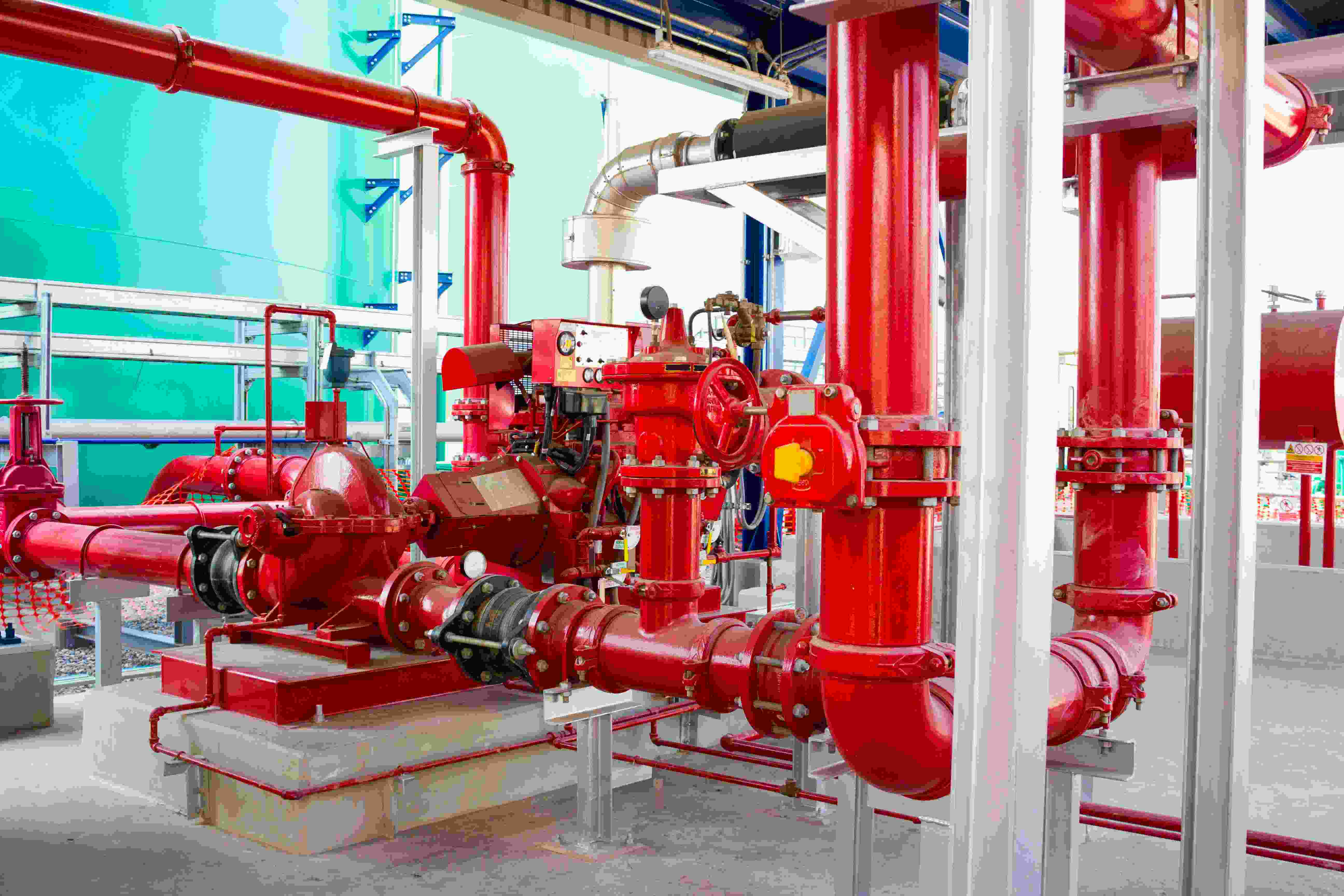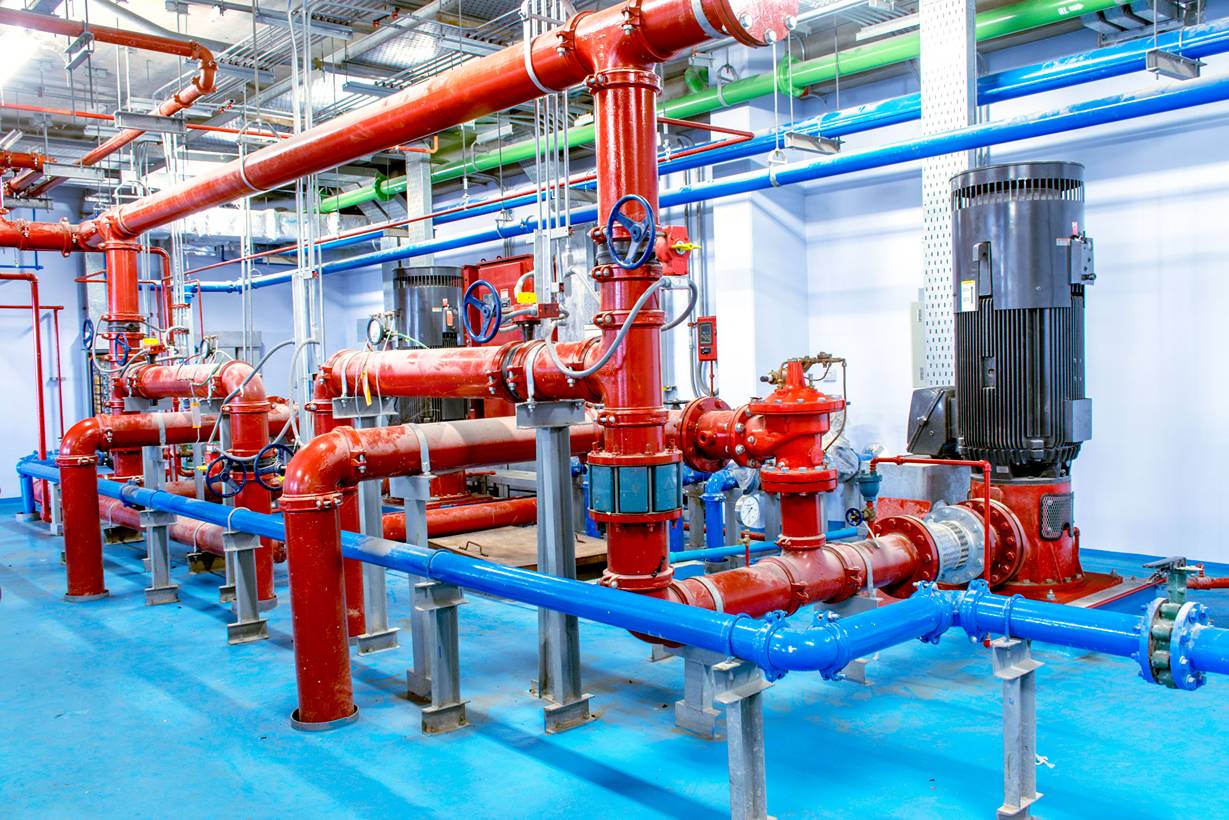Our fire pump design is affordable without compromising its quality. We provide the best designs and installations on the market.
We identify & eliminate unnecessary energy consumption, leaving you with maximal functionality for the minimum annual energy cost.
All of our systems are designed with longevity in mind, saving you maintenance costs down the line.

For the protection of your facility against fire damage, fire sprinklers that work efficiently are vital. However, as part of the design and construction of a functional and effective sprinkler system, a vital component completes the system in the form of a fire pump.
Nearby Engineers New York Engineers provide unmatched fire pump design, installation, and maintenance. Our fire pump design service is about way more than merely designing a commercially viable fire pump solution that fits into an effectively-functioning sprinkler system.
We are one of the fastest growing MEP design firms in the construction industry. We pride ourselves on having a fast turnaround while providing cost effective solutions. We are licensed in 50 states and are your one stop shop for all MEP design needs.
We are licensed in all 50 states!
We design to the perfection
Enjoy our lightening fast turnaround
We have completed so far!
Our designs are approved by DOB in one go
The best service experience in the market

For the protection of your facility against fire damage, fire sprinklers that work efficiently are vital. However, as part of the design and construction of a functional and effective sprinkler system, a vital component completes the system in the form of a fire pump.
Whether you’re commissioning some renovations to an existing building structure or you’re having a brand new building constructed, it is at this vital phase where the most effective fire pump design process should be considered. Fire pumps designed at this crucial phase can subsequently be installed on a custom level, effectively built into the original construction design of the building to offer the best fire protection.
By the time an actual fire emergency strikes, it is indeed still possible to plan around the fire protection needs of your building, but then it becomes a matter of expensive damage control and the process itself of designing a fire pump for an existing building structure takes up more resources. For instance, as part of the operations of adding the fire pump, some drilling may need to be completed, something which is a less effective way of facilitating fire pump design.
We can provide you the best fire pump design and make sure your sprinkler systems never run out of water. Give our engineers a call today to get started.
The function of a fire pump within a sprinkler system is to supply water to the sprinkler head. The water which is supplied by the fire pump needs to be regulated so that there is enough of it to put out a fire that might have flared up, some of which fires might be quick-spreading. The water received by the sprinkler head would need to be able to extinguish any size fire.
The pressure created by the fire pump is driven by an engine mechanism, running either on diesel, steam, or electricity. When the sprinkler head is activated by exposure to the levels of heat which suggest the presence of a fire, it is opened up and water is released below, onto the fire. When this system is designed effectively, often this action proves to be enough to completely put out the blaze, negating the need for fire-fighters to arrive on the scene and manually put it out.
This is where the efficiency of the sprinkler system comes into focus, specifically with regards to its water pressure sensing capabilities. It would need to be able to effectively detect water pressure dips in the building. A specific threshold would be set for the flow rate, with the fire pump powering up when this minimum flow rate threshold is breached, kicking the sprinkler system into action to put out the fire in a more effective manner.
Large buildings and high-rises typically have problems with water pressure, as well as constructions that have water tanks located at the ground level, making for the types of properties which are in most need of fire pumps.
Nearby Engineers New York Engineers can help design a fire pump for whichever size of a building. We have designed many of them already and our designs are done in accordance with the relevant NFPA standards.
In the process of designing a fire pump, two factors are taken into account, namely the type and size. These factors in turn depend on fire-related aspects of the building you want to have the sprinkler system installed in, namely the fire hazards and the size in square feet. Nearby Engineers New York Engineers deploys a fire pump design and installation process which best fits your specific needs around ensuring adequate and effective fire protection.
Fire Pump Sizing : Based on the parameters of the specifications of the building in which the system is going to be installed, a certain level of water pressure needs to be catered to in the output of the fire pump. The water pressure capacity and subsequent output are measured in gpm – gallons per minute. Two methods are currently used to work out the water pressure which will be required for your building, namely the standpipe method, and sprinkler area calculations.
Measuring required water pressure using the standpipe method : A standpipe is a structure which forms part of the building’s plumbing infrastructure, used by emergency response personnel such as firefighters so that they can gain access to greater water power and increase their firefighting potential. So a standpipe mirrors the functionality of a fire hydrant.
The standpipe method of sizing fire pumps is best used in smaller buildings which would likely only have a few standpipes. According to the standards which govern the hose systems along with the standpipe installation, 500 gpm should be the minimum pressure delivered to the first standpipe in the building, while each additional standpipe reached is required to receive 250 gpm. All of these can go up to a 1,000 gpm maximum.
Measuring required water pressure using sprinkler area calculations : Larger buildings often warrant the sprinkler area calculations pump sizing method, which is a lot more complex than the standpipe method used to size smaller buildings housing fewer standpipes. Fire hazard classifications are taken into account with this method so that sprinkler density can be determined in accordance with the water pressure that would be required to extinguish a fire. Nearby Engineers New York Engineers offers these calculations as part of our professional service offering.
Following the sizing process, the next step in completing the fire pump design process entails determining the most appropriate type of fire pump for the building it is to be housed in. There are three options available, including Inline Fire Pumps, Horizontal Fire Pumps with Split-Casing, and Vertical Turbine Fire Pumps.
Inline Fire Pumps : Inline fire pumps are often selected because of the effects of their space-saving design, such as the associated lower cost of installation. You would go for an inline fire pump if you were looking for a more compact option.
Horizontal Fire Pumps with Split-Casing : Horizontal fire pumps typically have a split-casing profile, which is why they’re also known as double-suction fire pumps. Horizontal split-case fire pumps boast a wide variation in water pressure rating, typically ranging from the minimum requirement of 250 gpm right up to 5,000 gpm, making them the most common of the pump types installed in modern times.
Vertical Turbine Fire Pumps : If the building’s water supply falls below the suction flange then a vertical turbine fire pump is the only suitable option to be installed, as per the standards around the required positive suction pressure.

Although we relish the prospect of heading up the fire pump design process as deployed during the construction of a brand new building, Nearby Engineers New York Engineers is more than adequately skilled and experienced in fire pump installation and repair in existing and even really old building structures.
Often making for a forgotten part of automated fire protection systems, if a fire pump is non-functional, there is a high risk of the entire system failing. As part of the design process for the installation of any kind of fire pump revealed to be the best solution for your building, Nearby Engineers New York Engineers applies strict testing and inspection requirements to ensure the prevention of pump failure. While meticulous attention is paid to ensure design-time durability and efficiency, the ongoing, post-installation inspection and monitoring forms part of the design greater solutions design process.
Installation complies with all governing codes and once completed, you can rest assured that you will have an effective sprinkler system that is powered by an efficient fire pump design-profile.
Since our expert team of engineers boasts extensive experience in the design process of sprinkler systems and integrated components such as fire pumps, Nearby Engineers New York Engineers can be trusted to deliver a stellar job in completing any monitoring, maintenance and repairs on existing fire pumps, as required. However, we encourage a proactive approach to any of the processes around monitoring, maintenance and repair, because consistent fire protection infrastructure service ensures that you remain compliant with the health and safety regulations, you maintain your insurance coverage eligibility, you keep your equipment ready for use, and you create a culture of practicing and promoting safety.
An additional power source as a backup can be considered as part of the design process, with a generator making for the logical choice. If a generator will be deployed, a transfer switch for the fire pump will be required and it would have to be dedicated to the fire pump. To reduce the size of the additional space the generator would potentially take up, one with a reduced-voltage start can be used.
In some specific instances a single power source may not meet the requirements around reliability, but this is a scenario that would arise out of previously installed fire pump designs. In that case New Your Engineers is at hand to facilitate the integration of the requisite alternate power source, in the form of a backup generator or a compound solution comprised out of a combination of single-source options.
The alternate electric source can be substituted by a steam-driven or a diesel backup and the expertise of the Nearby Engineers New York Engineers team will be deployed to come up with the best solution, should the situation ever warrant the need to factor-in these considerations.
The need for expert-level involvement in the fire pump design ultimately always goes back to the function of increasing water pressure in the case that the water systems operated and maintained by the municipality are unable to supply water at sufficient pressure to meet the design requirements of hydraulic sprinkler systems.
As a rule of thumb, any high-rise building invariably needs the increased pressure provided by fire pumps, as well as premises that have high terminal pressures. Fire pumps are required to be fitted so as to increase water pressure.
Our team of highly qualified and experienced engineers are immensely skilled throughout the entire process of conceptualizing, designing, building and installing customized fire pump solutions. Because of unique topographical and environmental factors affecting it during the construction phase, every building comes with its own set of challenges. Consequently, when a project is taken up by Nearby EngineersNew York Engineers, potential challenges as well as increases in water pressure are minimized for your uniquely designed fire protection system.
Nearby Engineers New York Engineers fully understands the importance of having your fire protection systems ready for any eventuality, particularly those mishaps which have a propensity of actualizing when some of the complementary plumbing infrastructures may not be functioning optimally. Your plumbing is key to the proper functioning of your fire protection systems, which should always be at the ready for events that may never even happen.
While we do indeed offer our expert products and services such as fire pump design at the specialist level, the collective that is Nearby Engineering New York Engineering embodies engineering principles that go beyond each of the isolated systems. Each of our service offerings functions as a high-quality stand-alone solution, but it forms part of a greater system whose quality is greater than the sum of its parts.
We say we’re coming in to design and install the best fire pump solution for your sprinkler system, but really what we’re doing goes beyond that. What we’re really doing is ensuring your building is maximally protected from the serious damage that can be caused by fire.
382 NE 191st St , Suite 49674
Miami, Florida 33179276 5th Avenue, Suite 704 #904
New York, NY 10001